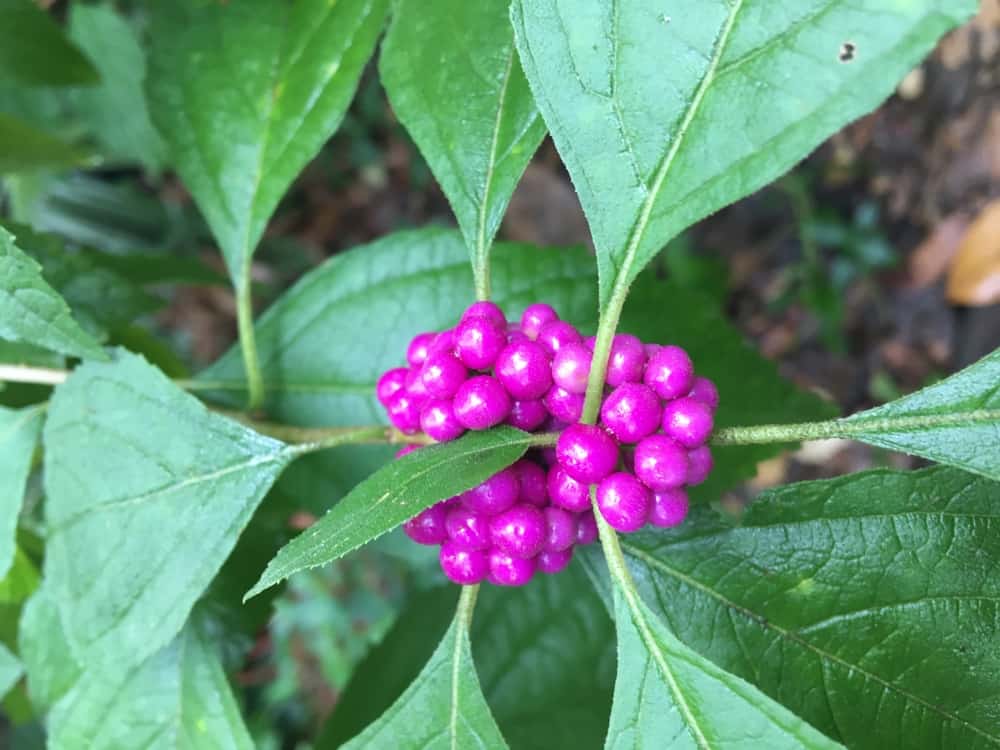Beautyberry – More Than Just a Pretty Plant!
As with many plants in our landscape, we tend to notice those with bright colors or bold shapes, that catch our eyes and inspire us to take the time to enjoy. American Beautyberry, also known as French Mulberry, is one of my favorites, especially this time of year when the large clusters of berries turn a rich and shiny shade of purple that provides a noticeable contrast with the light green leaves.

But this plant is more than just a pretty “face” in our yards and woodlands. Its berries and leaves feed many creatures throughout the year, including us! The plant’s leaves are eaten by deer and a couple species of moth caterpillars. After the leaves emerge in early spring, clusters of small, pink, pompom-shaped flowers emerge. But the main “dish” on the menu are the berries – eaten by a wide range of birds, including Northern Mockingbird, Brown Thrasher, Eastern Towhee, as well as Opossums and other small mammals. It can indeed by entertaining to watch Mockingbirds run off other birds trying to eat “their” berries.
But what about us? A nice, pinkish-colored jelly can be made from the berries, despite some references to them being harmful. Just follow a basic recipe for jelly using berries. The leaves, rubbed on your skin, are also reported to help ward off insects. In any case, this plant is a wonderful addition to your yard or in public places where it can support wildlife. As with all native plants, Beautyberry is also as low a maintenance plant as you can hope for. It is easily transplantable when it goes dormant in the winter months and young seedlings are easy to spot where the plant is common. And if and when the multiple stems get out of hand, it tolerates being trimmed or cut down to the ground and aloud to regrow with even more stems that highlight its shape and texture.
Beautyberry is a great native plant that you can enjoy in your yard both for its beauty and for its support of many of our local birds and wildlife. And if you are like me and my foraging friends, Beautyberry jelly adds much to a biscuit or two. So look for this attractive plant while it puts on a show as we head into fall.
Hope to see you in our great outdoors!!!




